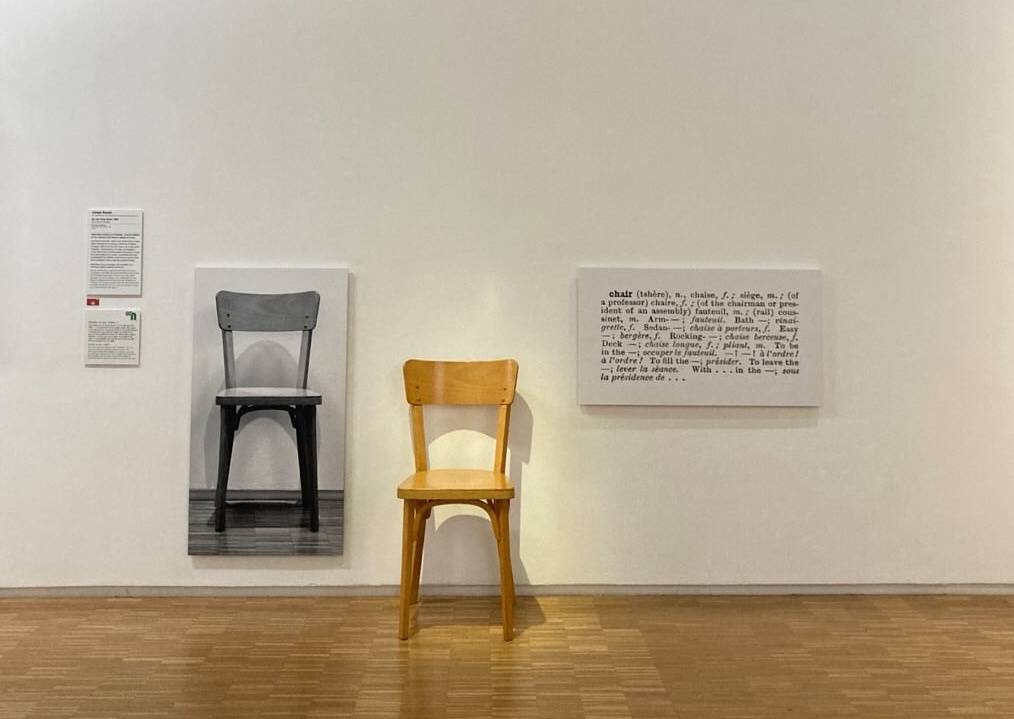One and Three Actions
Lemeeze Davids
An enquiry into how the form of a chair has been used by artists as a catalyst for action. – March 17, 2025
When talking about a project on DIY furniture in Goods, curator Daniel Malan and I had a conversation about the title – working under ‘Chairs’ as he sketched it out, we came to the conclusion that it needed something. A verb. Assembling Chairs.Seeing the chair as a support for an action – a verb catalyst – perhaps explains how the form has served as an unexpected muse for artists over time.
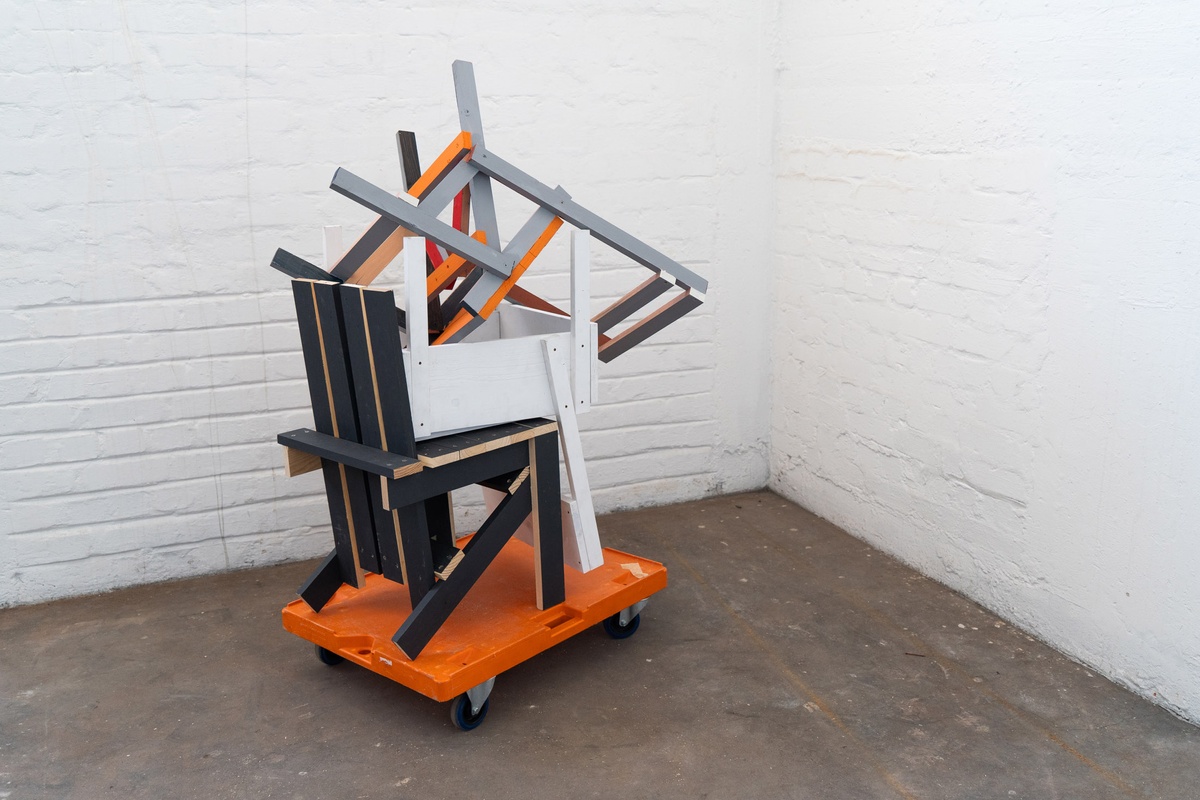
For Martino Gamper’s 100 Chairs project, where he constructed one hybrid form a day for 100 days out of parts of discarded chairs, Alex Rich proposed to include Richard Serra’s Verb List (1967) in the catalogue.Rich asserted its relevance to Gamper, quoting Serra saying, “I really just worked out pieces in relation to the verb list…what happens when you do that is don’t become involved with the psychology of what you’re making, nor…the after image of what it’s going to look like.”
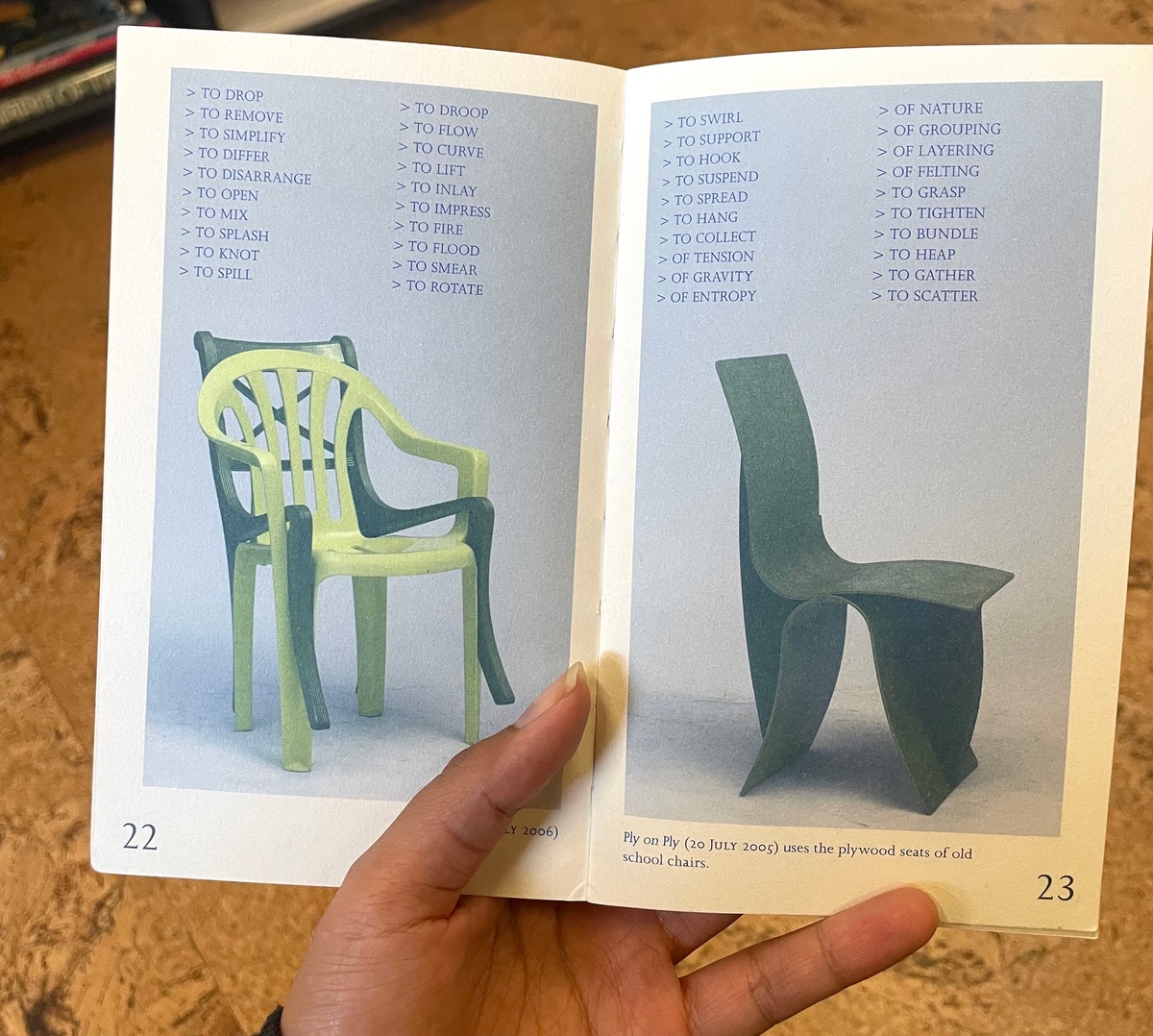
Sarah Lucas is another such artist who has been engaging with chairs. Since 1992, she has used them as a way to “accommodate the human body sitting... Generally as a support for an action or object. Changing light bulbs. Propping open a door. Posing. Sex.”Her infamous soft, leggy Bunny (1997) is draped over a found chair, imbuing the form with personality and viscerality, while solving the problem of structural support and getting the sculpture off the ground. While in other works like Excato (2018), the chair itself becomes a replacement for a pierced human body.[verbs: prop, pose, seduce, drape, support, pierce]
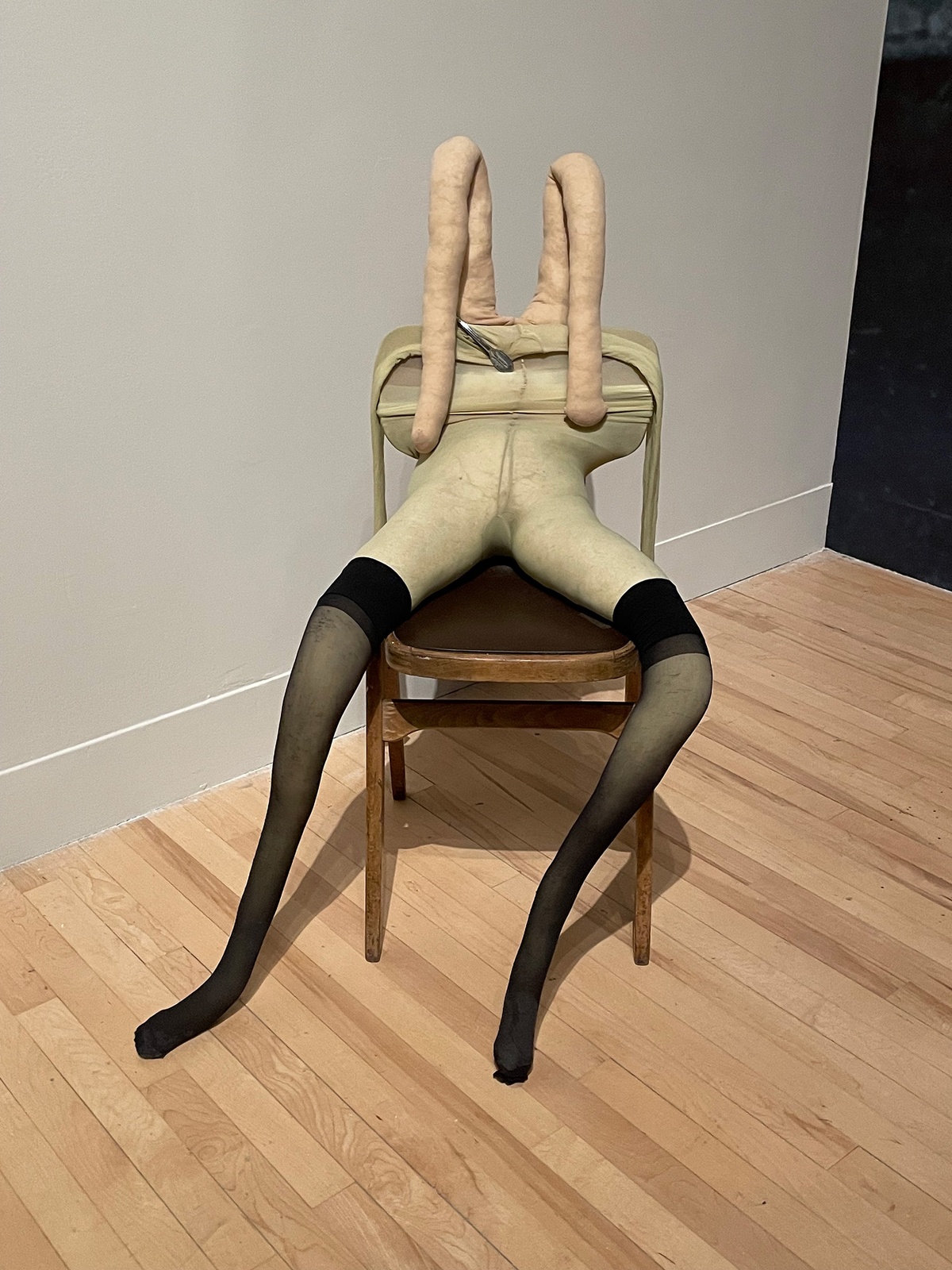
“What I look for in materials is readiness. Something I can get on with in a spontaneous way and just do it myself... The important thing for me is to be able to act on it there and then.”– Sarah Lucas, HAPPY GAS (2023), Tate
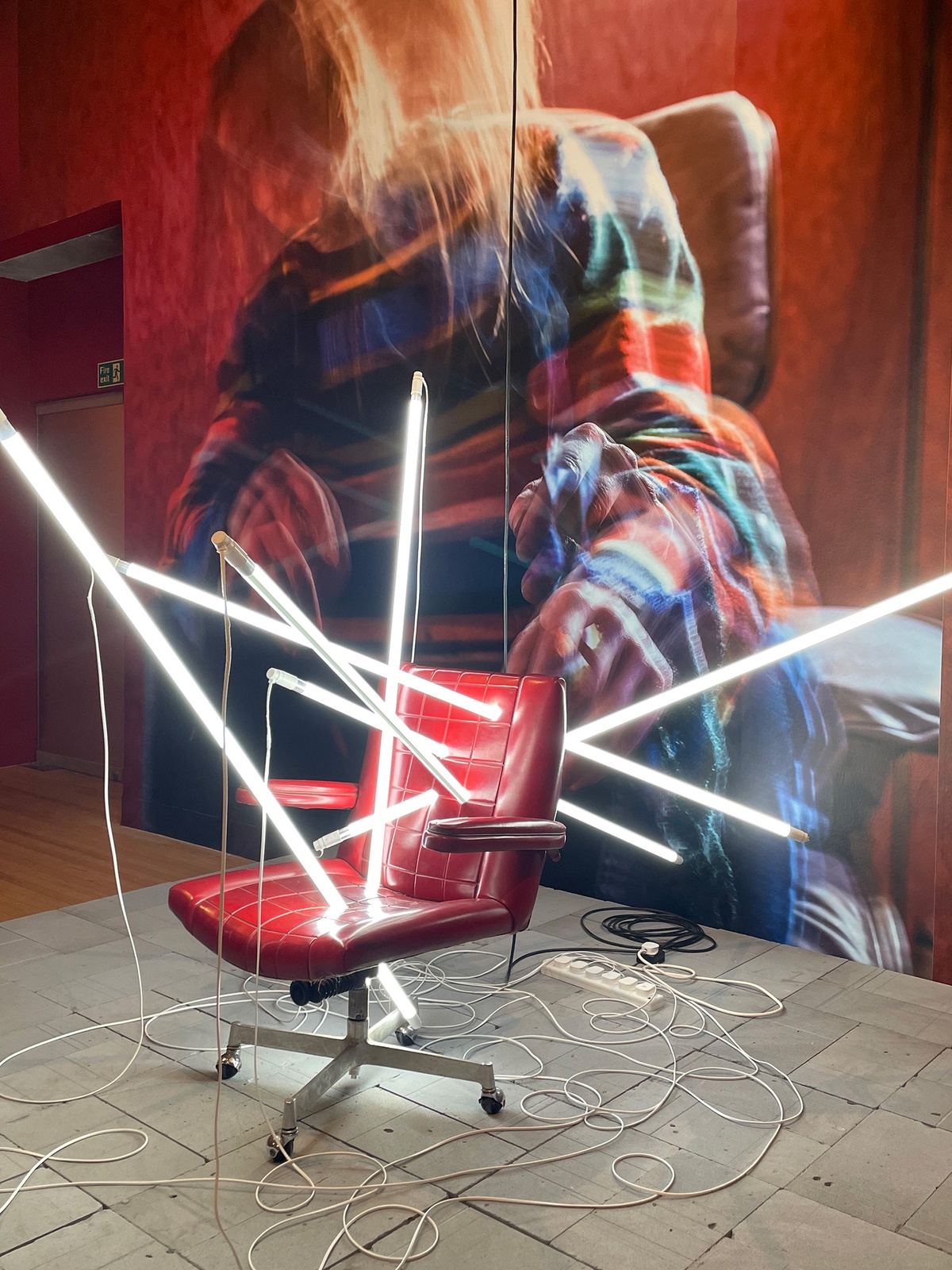
Nicholas Hlobo also enlists the chair’s form in his practice. The installation Sit - on or stand up and be counted (2001) – note the action-packed title – utilises a necklace display modelled after a neck, while its seat boasts a phallic intrusion.Art critic Emmanuel Balogun writes, “the artist ‘re-socializes’ materials with meaning…[Hlobo] both instructs the onlooker, and accuses them, of seeking out the erotic.”[verbs: sit, stand up, be counted, socialise, eroticise, accuse]
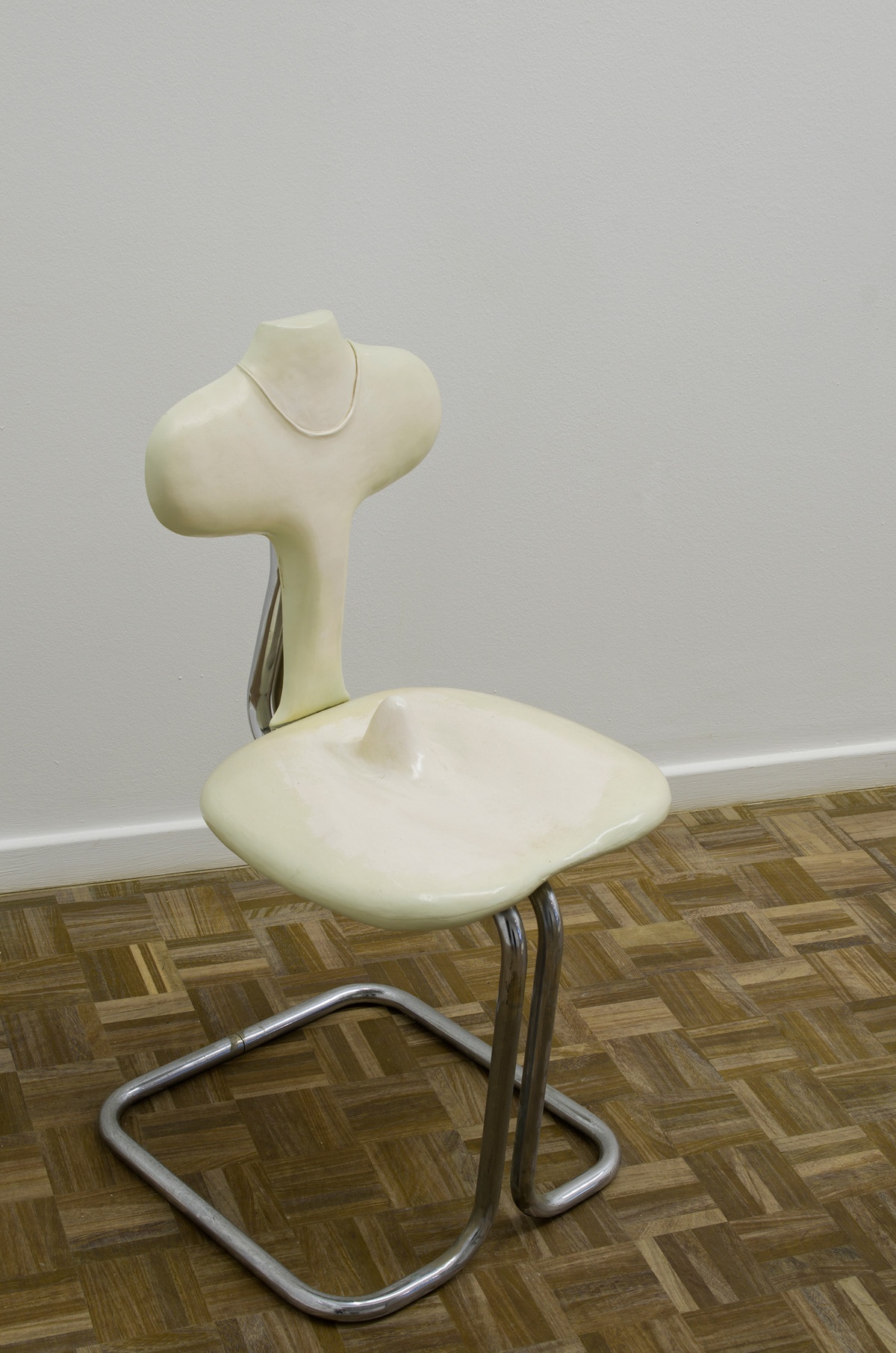
To sit or not to sit? That is the question for Cameron’s Platter’s sculptures.In an interview for Krone’s journal, he echoes this ‘re-socialisation’ process of the chair: “In my carving a piece of wood to look like a plastic chair, I’m ‘totemifying’ those original objects… I’d say that I use [them] to meditate on culture, and try to help me make sense of the world.”As an incidental coordinate through popular culture, chairs take us through a history of modern design. Platter suggests a Slow Dance, following the title of the work.[verbs: slow dance, ‘totemify’, make sense, trace, design]
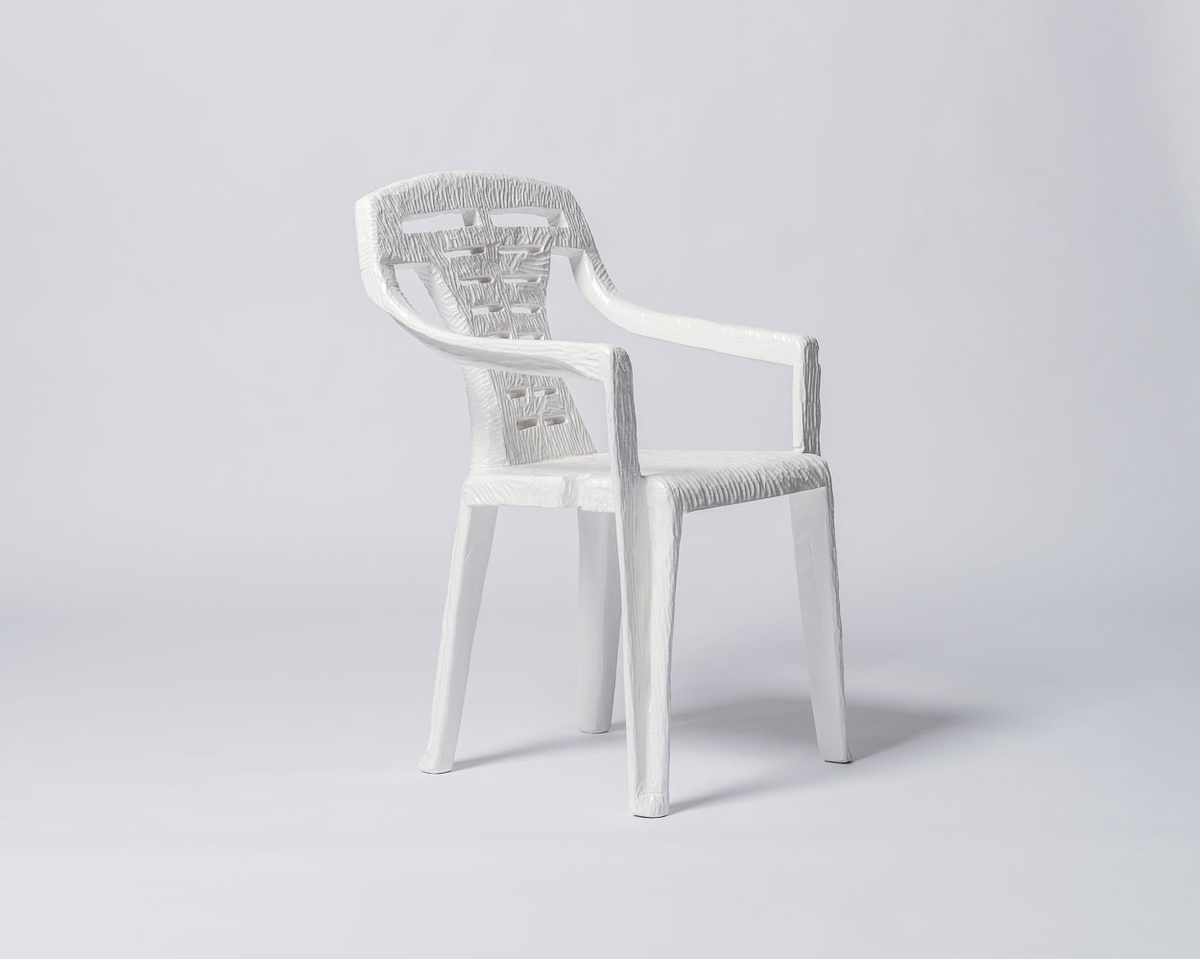
Another example of a chair telling us about its material process is Xandre Kriel’s The Piek, a chair which lies in pieces in A4’s storage facility, where Kriel spent time on residency. The chair, leaning against the wall, was waiting to be made useful through the performance of assemblage.Even in its final utilitarian form, the angles of the chair only make for temporary sitting in an stern posture – for use on the threshold of another activity, like tying one’s shoes.[verbs: assemble, perform, transition, sit on the edge]
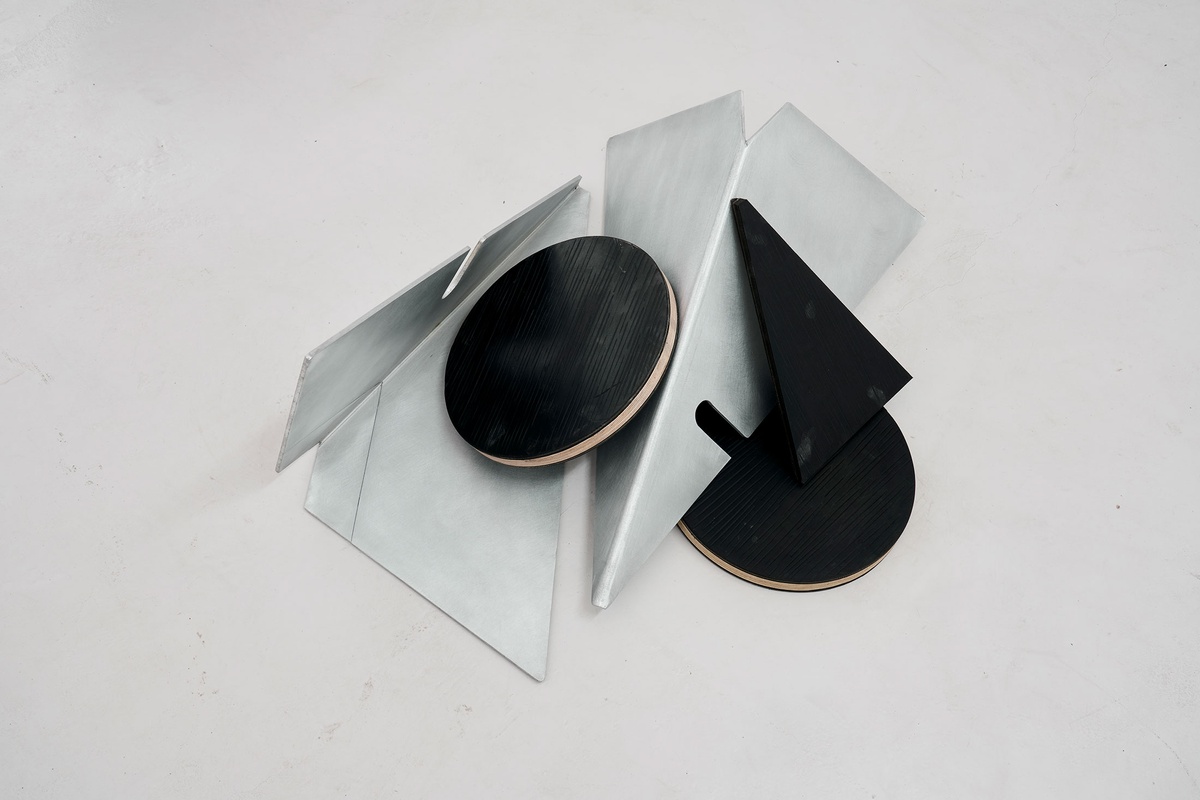
Also held in a similar state of limbo, one of the activations in Jared Ginsburg’s Hoist (2011) features a deck chair being strung up by a cable, and in this vulnerable position, is relieved “of its utility, jogging familiar associations and prompting an alternate engagement,” as the exhibition text explains.Hoist describes a brief moment when the chair’s formal qualities turned into a sculptural proposal.[verbs: hoist, relieve, hang, expose]
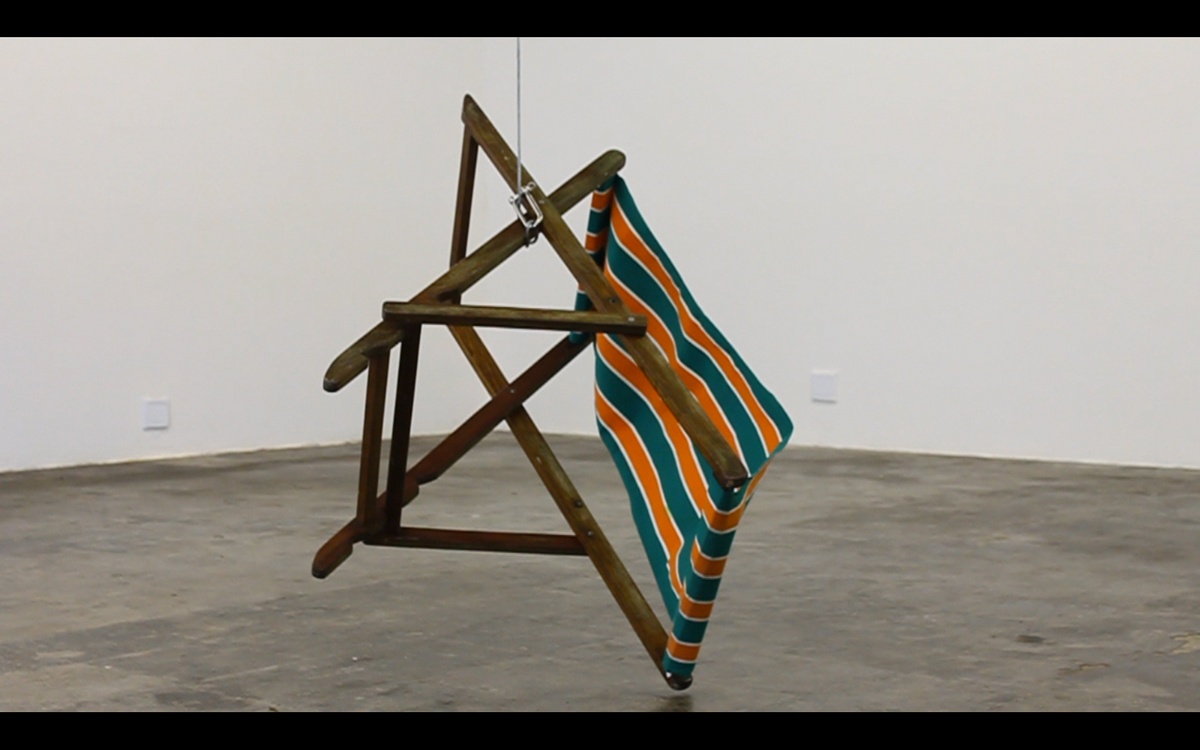
Watch Lawrence Malstaf’s Rope (1999) imperil a chair further, as he describes the performance: “A rope slowly spins around a chair, caressing it. As the speed increases, the tension builds up and the chair is strangled or tossed around.”Anthropomorphised as a character in this ballet, the legs of chair are elevated in a similar way to Ginsburg’s Hoist – suspending its purpose.[verbs: spin, caress, build up, strangle, toss, suspend]
Instead of suspending the form to interrupt it, what if it was rendered totally useless? Edson Chagas’ Found Not Taken is a series of images of discarded objects photographed out of their usual context. In 2013, Chagas found this metal frame when walking in Luanda, Angola, and he placed it in conversation with an aluminium street pole.We still recognise it as a chair, even with the spatial intervention. There is a ghost of the sitter.[verbs: find, place, take]

Patrick Waterhouse’s Standard Deviation features another incapacitated chair as a part of a wall of images exploring the history of intelligence testing.The image would be given to a child to evaluate whether they could recognise the action associated with the chair, even though it may abstracted by its incompleteness.[verb: abstract, recognise, evaluate, sit]
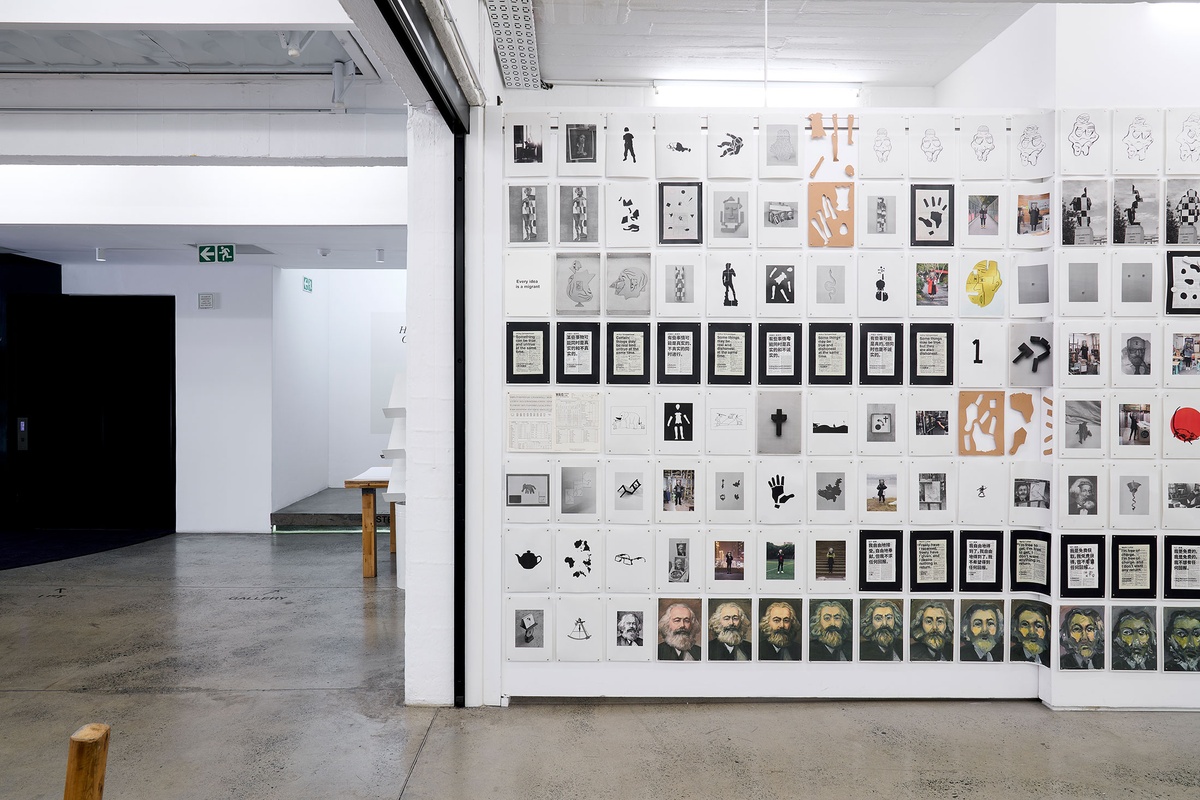
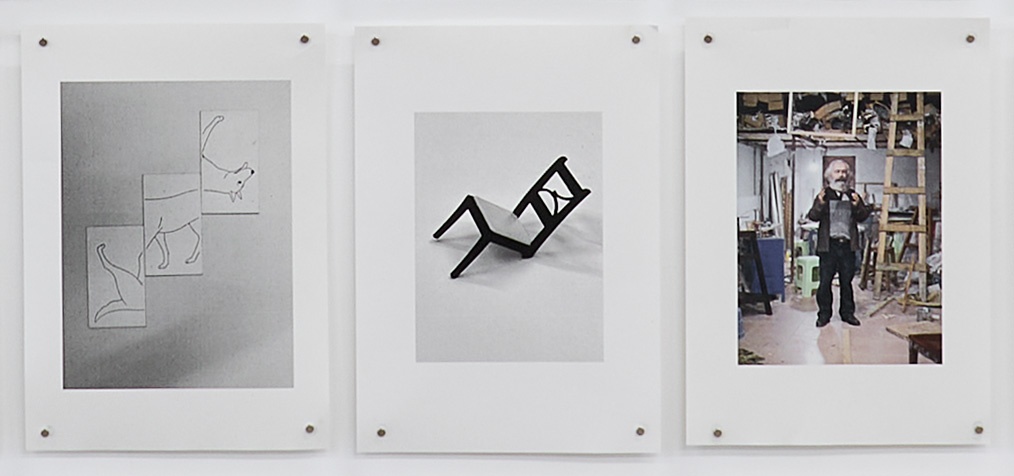
“A chair sits alongside a photograph of a chair and a dictionary definition of the word chair. Perhaps all three are chairs, or codes for one: a visual code, a verbal code, and a code in the language of objects, that is, a chair of wood. But isn't this last chair simply…a chair?”– excerpt on Joseph Kosuth’s One and Three Chairs (1965) from The Museum of Modern Art, MoMA Highlights, New York: The Museum of Modern Art, revised 2004, originally published 1999, p. 257.[verb: is]
Like Kosuth's seminal work questioning the nature of representation, these artists' engagements with chairs reveal how a simple functional object can embody the conceptual weight of human presence and activity.In their various states of function and dysfunction, these interventions reveal the chair not just as furniture, but as a perpetual prompt for action.
